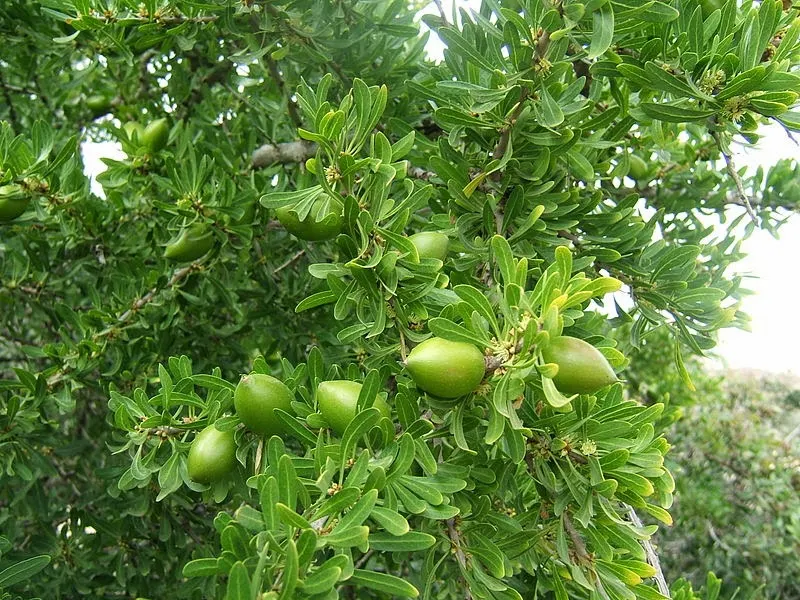By Liliana Usvat
Blog 216-365
Have you planted a tree this year? If not why not?
If you decide to plant a tree why not plant one that is useful. There are medicinal tree, fruit trees or a legume tree.at
What is a food forest?
Forest gardening is a low-maintenance sustainable plant-based food .
Fruit and nut trees, berries and herbs and wild plants all blended together in a productive and sustainable way."
A Food Forest is built to emulate a real forest — only we fill it with the food plants and trees that we want.
Real forests don’t need any work, they self-maintain — no pesticides, herbicides, weeding, crop rotation, mowing or digging. Food forests don’t need any of this either! Less work, more food, all natural! Why would you do anything else?
Principles
By understanding how forests grow and sustain themselves without human intervention, we can learn from Nature, copy the systems and patterns to model our own forests — ones filled with trees and plants that produce food we can eat. We can design and construct the most sustainable food production systems possible; perfected, refined and cared for by Mother Nature herself.
Forests exist fine on their own. There’s no mowing, weeding, spraying, or digging required. No pesticides, fertilisers, herbicides or nasty chemicals.
Food Forests not Orchards
Apple
Cherry
Chestnut
Pear
Walnut
Quince
Nitrogen Fixers & smaller trees
Shade tolerant trees
Pruned into open form for light
Almond dwarf
Apple Dwarf
Apricot
Serviceberry
Silverberry
Acacia/Wattles
Flowering, fruiting, wildlife attracting
Blackberry
Blueberry
Cape Gooseberry
Citronella
Currants
Curry Plant
Self seeding annuals
Bee & poultry forage
Mulch & soil builders, cover crops
Asparagus
Balm
Borage
Broad bean
Dill
Fennel
Low, prostrate, creeping plants
Forms a living mulch – retain, suppress weed growth
Alpine Strawberries
Sweet Alyssum
Basil Thyme
Black Cumin
Clover
Prostrate Rosemary
Roman Chamomile
Shallow rooted, easy to dig
Longer rooted left to flower for beneficial insects
Carrot
Garlic
Ginger
Ginseng
Groundnut
Horseradish
Twine around trunks or up fences, trellises, etc.
Habitat and food
Only in established Forest Garden, can strangle young trees
Grapes
Honeydew Melon
Honeysuckle (Blue-berried)
Hops
Kiwi Berry / Hardy Kiwifruit
Kiwi fruit
Malabar Spinach
links
http://milkwood.net/2011/07/29/our-forest-garden-design-the-future-is-forested-and-foodlike/
https://www.youtube.com/watch?v=L74WkW1rWKU
Blog 216-365
Have you planted a tree this year? If not why not?
If you decide to plant a tree why not plant one that is useful. There are medicinal tree, fruit trees or a legume tree.at
What is a food forest?
Forest gardening is a low-maintenance sustainable plant-based food .
Fruit and nut trees, berries and herbs and wild plants all blended together in a productive and sustainable way."
A Food Forest is built to emulate a real forest — only we fill it with the food plants and trees that we want.
Real forests don’t need any work, they self-maintain — no pesticides, herbicides, weeding, crop rotation, mowing or digging. Food forests don’t need any of this either! Less work, more food, all natural! Why would you do anything else?
Principles
By understanding how forests grow and sustain themselves without human intervention, we can learn from Nature, copy the systems and patterns to model our own forests — ones filled with trees and plants that produce food we can eat. We can design and construct the most sustainable food production systems possible; perfected, refined and cared for by Mother Nature herself.
Forests exist fine on their own. There’s no mowing, weeding, spraying, or digging required. No pesticides, fertilisers, herbicides or nasty chemicals.
Food Forests not Orchards
- Rows of trees are not food forests. They are instead what is described as an orchard.
- Rows of trees with some other plant underneath are not food forests, they are orchards with under-plantings.
- Rows of trees with rows of other plants alternating between them are not food forests, they are orchards employing intercropping.
7 Layers of a Temperate Forest Garden
The 7 layer classification system was developed by Robert Hart from Prehistoric tropical garden methods in the 60s for more temperate climates. It provides a structure similar to that of a real forest that can be adapted from a large scale farm to that of a modest backyard. The architecture of a successful food forest considers not only light requirements of the plants, but water, shelter, root depths and other companion planting principles.1. Canopy Layer
9m+ high nut, fruit and nitrogen fixing trees (Only larger FFGs)Apple
Cherry
Chestnut
Pear
Walnut
Quince
2. Low-tree Layer
4m high, Dwarf Fruit / Nut TreesNitrogen Fixers & smaller trees
Shade tolerant trees
Pruned into open form for light
Almond dwarf
Apple Dwarf
Apricot
Serviceberry
Silverberry
Acacia/Wattles
3. Shrub Layer
Woody perennial plantsFlowering, fruiting, wildlife attracting
Blackberry
Blueberry
Cape Gooseberry
Citronella
Currants
Curry Plant
4. Herbacious Layer
Perennial vegetablesSelf seeding annuals
Bee & poultry forage
Mulch & soil builders, cover crops
Asparagus
Balm
Borage
Broad bean
Dill
Fennel
5. Groundcover Layer
Less than 30cm highLow, prostrate, creeping plants
Forms a living mulch – retain, suppress weed growth
Alpine Strawberries
Sweet Alyssum
Basil Thyme
Black Cumin
Clover
Prostrate Rosemary
Roman Chamomile
6. Rhizosphere (Root) Layer
Edible roots & tubersShallow rooted, easy to dig
Longer rooted left to flower for beneficial insects
Carrot
Garlic
Ginger
Ginseng
Groundnut
Horseradish
7. Vertical Layer
Climbers, creepers, vinesTwine around trunks or up fences, trellises, etc.
Habitat and food
Only in established Forest Garden, can strangle young trees
Grapes
Honeydew Melon
Honeysuckle (Blue-berried)
Hops
Kiwi Berry / Hardy Kiwifruit
Kiwi fruit
Malabar Spinach
links
http://milkwood.net/2011/07/29/our-forest-garden-design-the-future-is-forested-and-foodlike/
https://www.youtube.com/watch?v=L74WkW1rWKU















